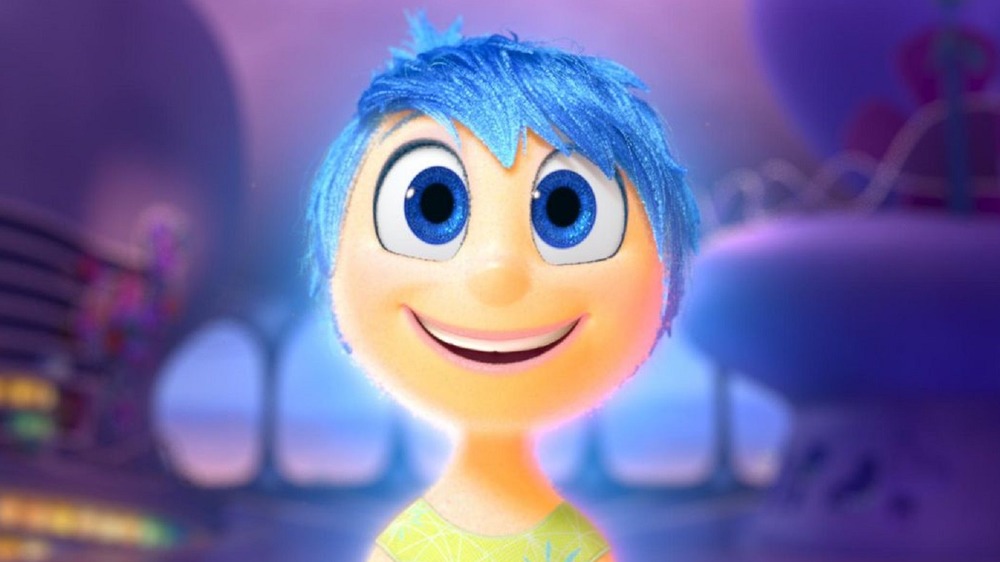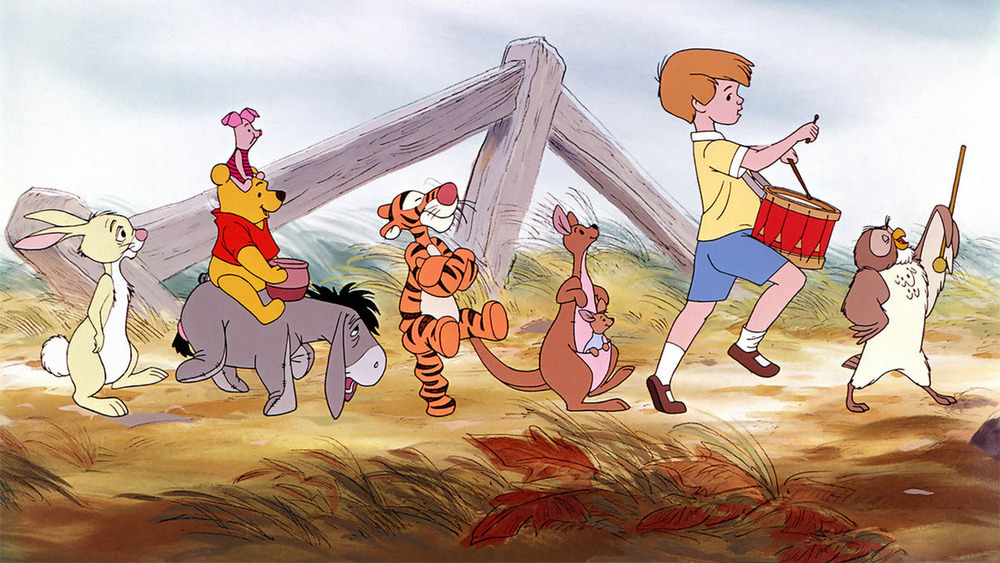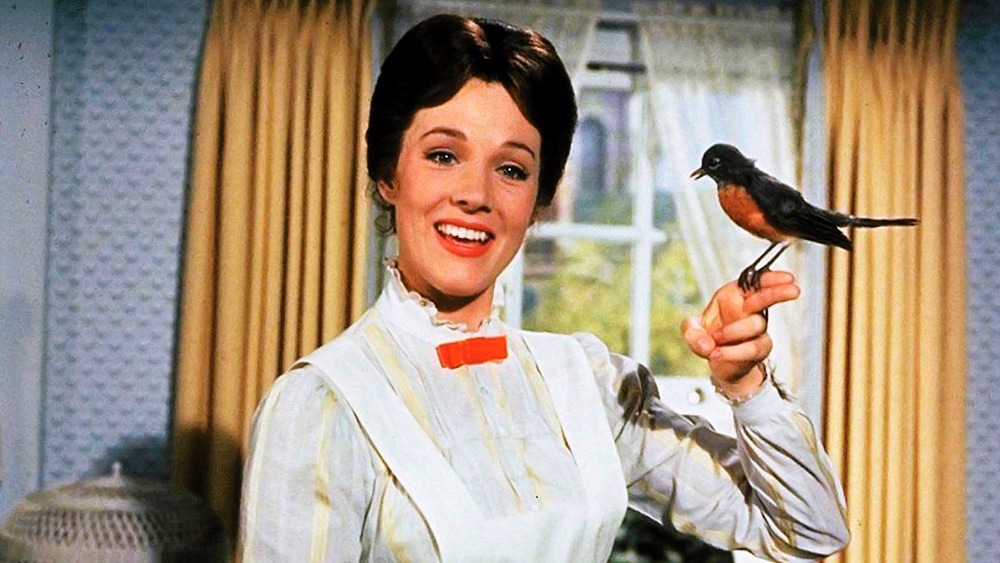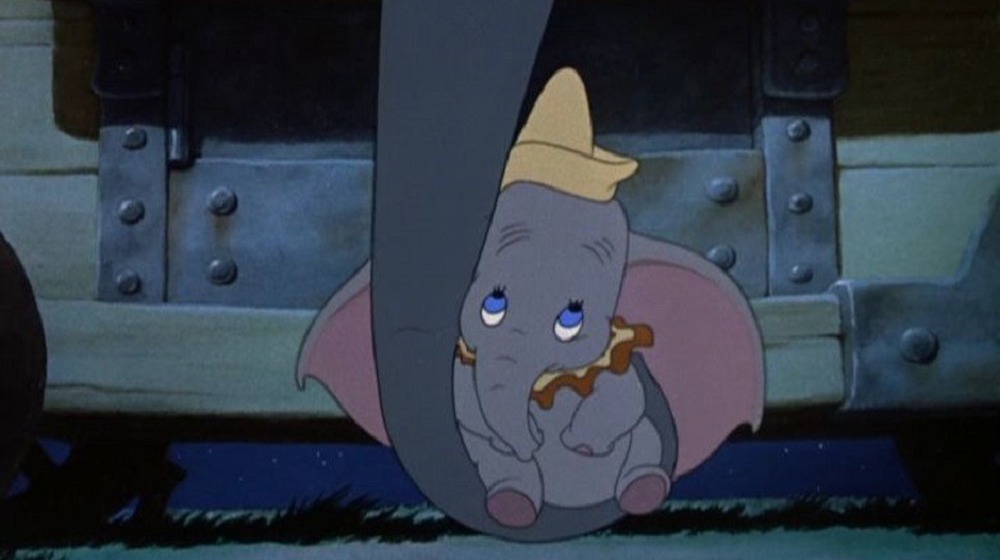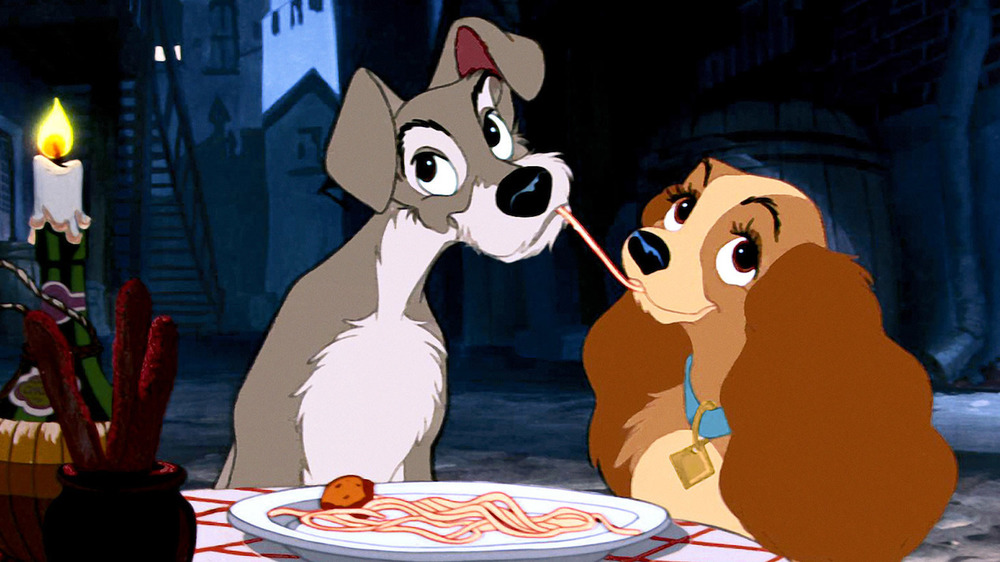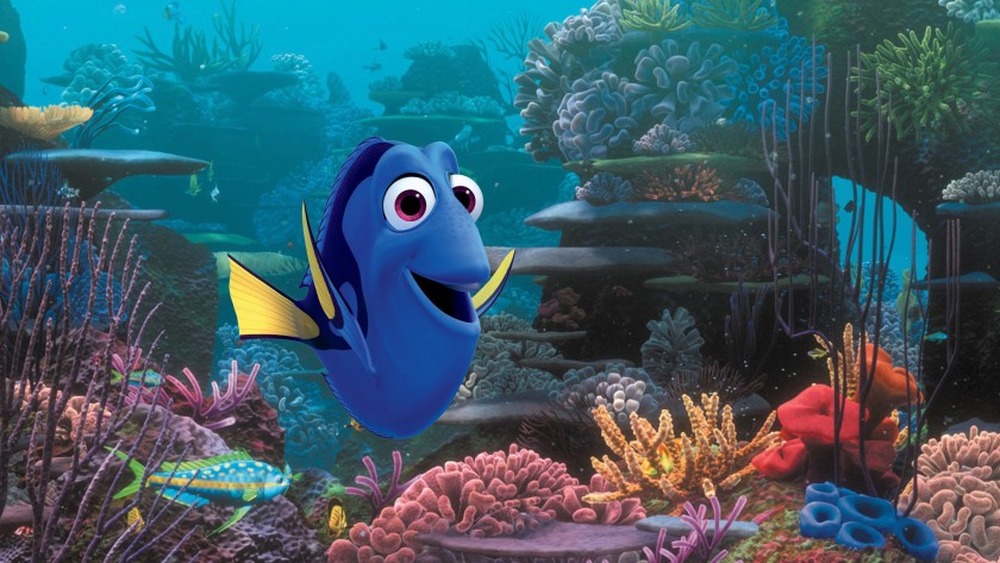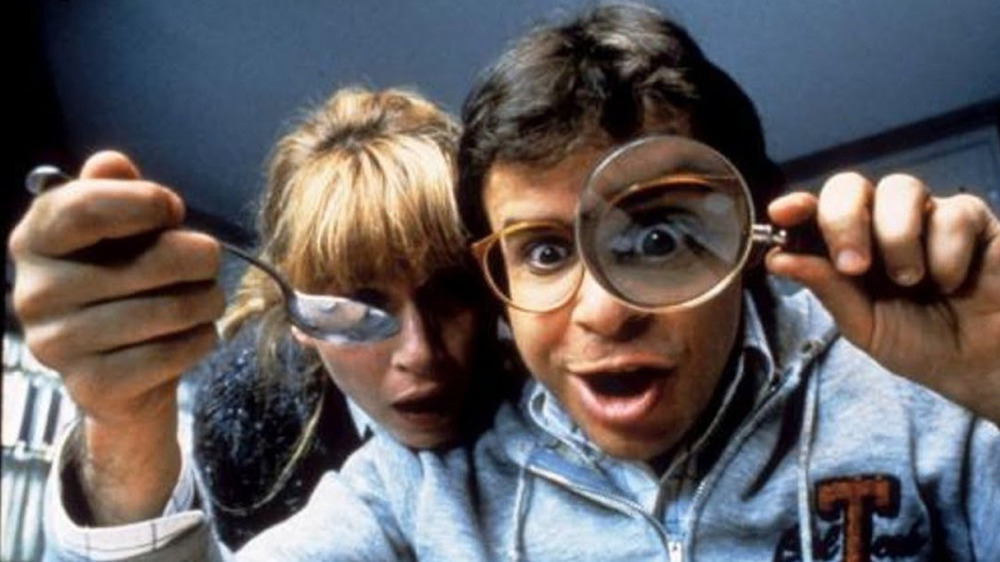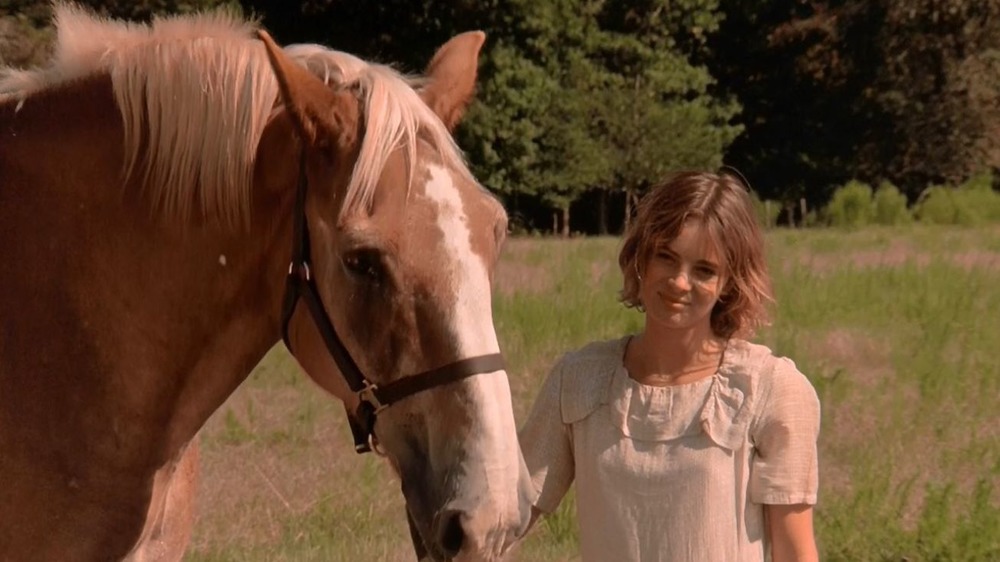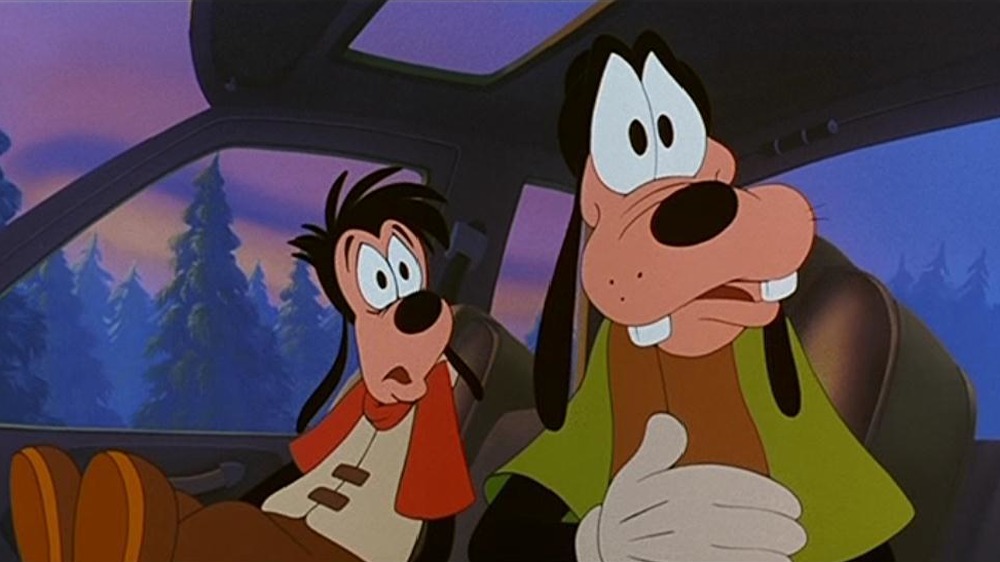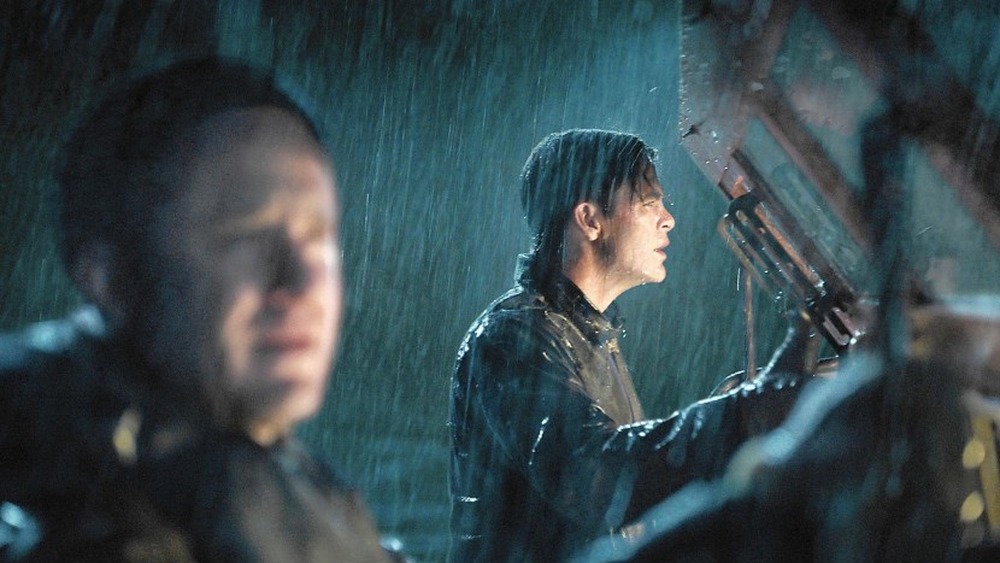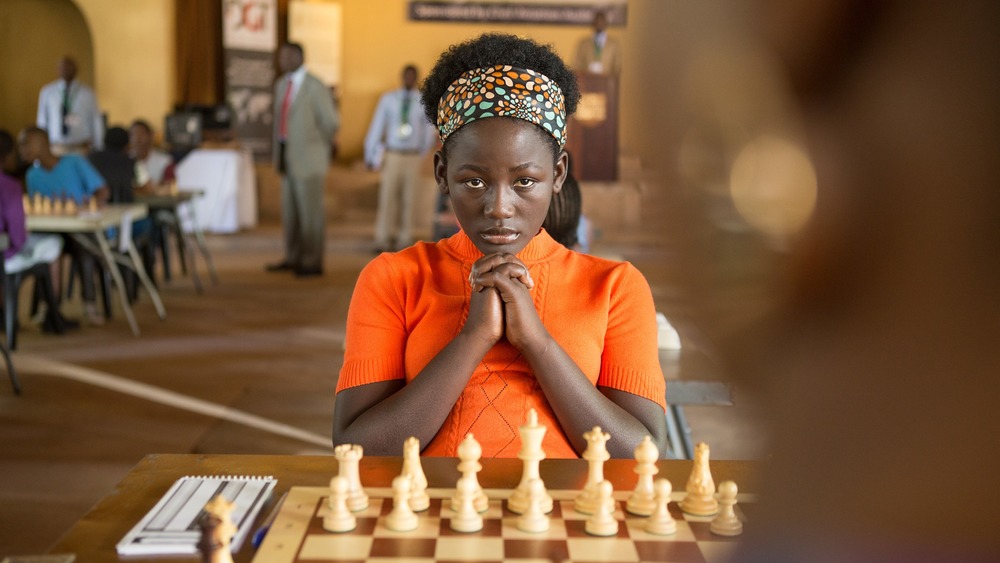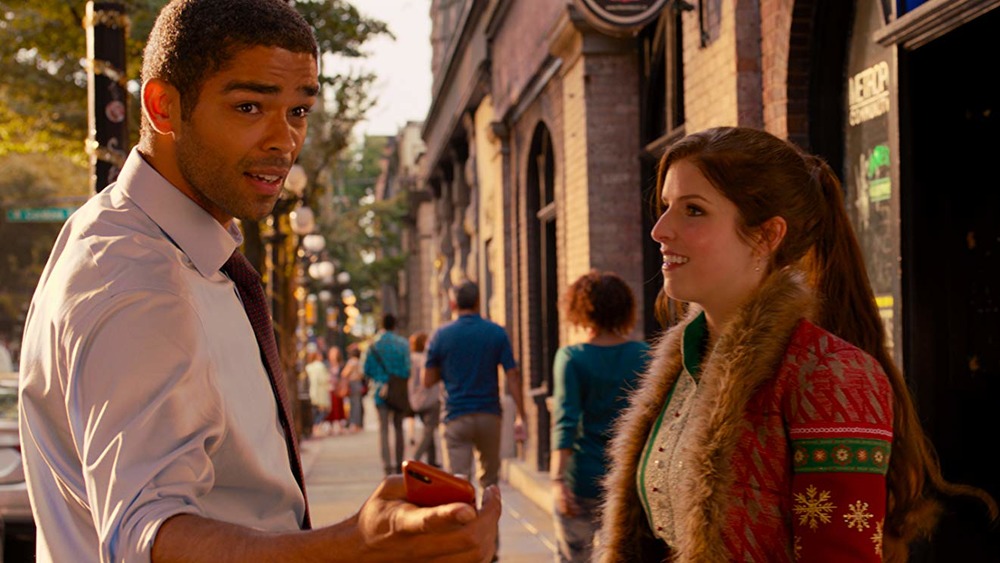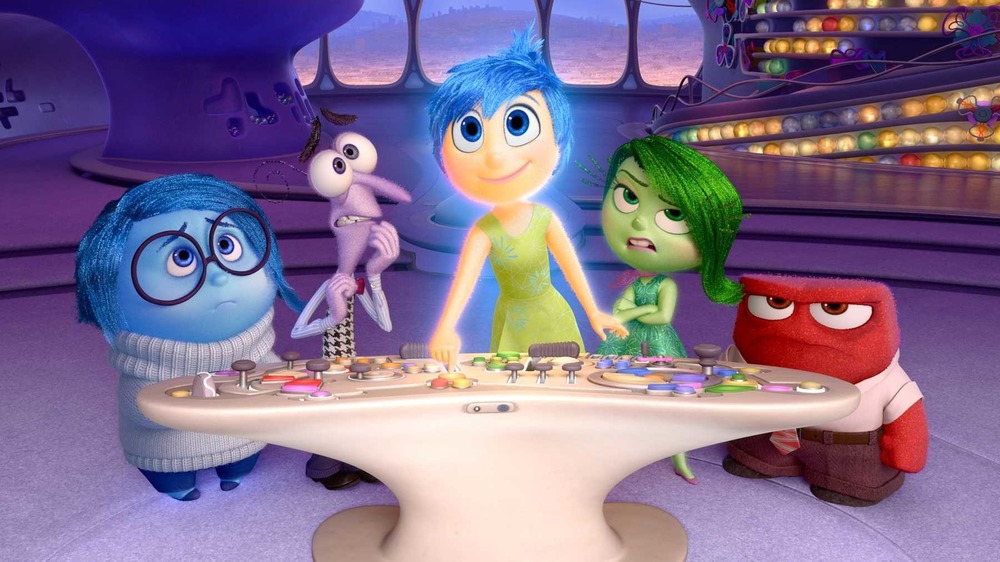Disney Movies That Don't Have A Villain
There are few character archetypes more iconic than the Disney villain, and any list of all-time great bad guys worth its salt is going to include at least one or two Disney creations. But despite Disney's talent for producing films featuring impressive villains such as Ursula, Maleficent, and Scar, not every film to come out of the mouse-eared studio has a designated villain. What's more, while many villain-less Disney films still feature some version of an antagonistic character for its hero to overcome, there are a number of well-loved Disney movies that don't even have that.
Instead, in these beloved films, the main conflict doesn't revolve around oppositional characters and their nefarious schemes. Instead, these movies pit their main characters against their environments, their circumstances, or sometimes even themselves. While these films can occasionally still feature an unlikeable character or two, those characters never significantly drive the conflict, and sometimes, they even wind up turning into allies by the end. However, the lack of a designated villain doesn't mean that these films are without tension and excitement. Here are just a few of Disney's most enjoyable films that don't have a villain.
There's no room for bad energy in The Many Adventures of Winnie the Pooh
Few films demonstrate the charming potential of a villain-less plot as effectively as 1977's The Many Adventures of Winnie the Pooh. Based on the stories by A. A. Milne, the animated film follows the titular bear of very little brain through a series of good-natured predicaments as he goes about life alongside his friends in the Hundred Acre Wood. Problems that Pooh must overcome include getting stuck in his friend Rabbit's front door, finding a new house for his pal Owl after the original dwelling falls from a tree, and learning to cope with his irrational fear of imaginary Heffalumps and Woozles.
While there are certainly some interpersonal conflicts in The Many Adventures of Winnie the Pooh, most notably between the uptight Rabbit and the free-spirited Tigger, none of the animal friends or their human buddy, Christopher Robin, could ever be considered villains. Even the Heffalumps and Woozles, which so terrify Pooh, are merely figments of his imagination that he fears are coming to steal his honey and not real foes he has to overcome. Yet there's no denying the sweet-hearted appeal of Pooh's low-stakes adventures with his friends, and The Many Adventures of Winnie the Pooh and its many sequels and spinoffs have successfully delighted children and their parents for generations.
The biggest villain is unhealthy family expectations in Mary Poppins
When the supercalifragilisticexpialidocious magical nanny Mary Poppins sweeps into the lives of the Banks family, it's not to help fight off a scary bad guy. Rather, Mary's song-strewn mission is to assist the Banks parents and children in shedding the societal constructs that keep them isolated from each other, allowing them to find happiness and wholeness as a family. Although there are some characters whose rigid expectations seem to drive a wedge into the family dynamic — namely, George Banks' curmudgeonly managers at the bank where he works — they aren't the true antagonists of the film. They're just some of the many external factors that influence the Banks family to be distant and cold with each other.
Once Mary Poppins comes into the lives of the Banks parents and children, though, they gradually realize that many of the elements in their lives preventing them from having a healthy family dynamic are of their own making. Through teaching each of the Bankses to embrace a sense of imagination, play, and childlike wonder, Mary Poppins brings the family closer together, and she also influences the stodgy people in their community to live happier lives. This includes the bank managers, who see the error of their ways and welcome George back into the much more relaxed fold. No one ever has to plot against the Banks family to drive the plot of Mary Poppins. Instead, the things they're fighting against are their own misconceptions about themselves and each other.
Animal exploitation is the true villain of Dumbo
One could possibly make an argument that the profit-hungry circus managers who separate Dumbo from his mother, Jumbo, are the villains of 1941's Dumbo. But while they definitely contribute to the baby elephant's unfortunate circumstances, Dumbo never really seems to consider himself in opposition to his human captors. Rather, the main force that appears to be working against Dumbo throughout the film is the general willingness of humans in general to exploit exotic animals for profit and entertainment. Dumbo never appears to really want to rid himself of the circus entirely; he just wants to be valued for who he is and treated with respect.
Granted, trying to parse out the inner motivations of an entirely nonverbal elephant is a guessing game at best, but considering the end of the movie finds Dumbo capitalizing on his ability to fly, achieving fame, and choosing to stay with the circus, it doesn't seem as though he views humans as his enemy. Instead, he's found a way to make the exploitative system that originally oppressed him work for him. Additionally, through the film's closing shot of Dumbo being reunited with his mother on the circus train, it looks as though he's used his newfound status to elevate others who were previously suppressed by the cruel system — and all without the movie ever needing a villain.
Class issues drive the conflict in Disney's Lady and the Tramp
Although Disney's animated films are known for their themes of bravery, friendship, and true love conquering all, a lesser-realized theme in many of its films with non-human protagonists may very well be that life as an animal is already hard enough without adding villains into the mix. Case in point, Lady and the Tramp, which sees a posh and sheltered Cocker Spaniel form an unlikely bond with a stray Schnauzer mix, one who teaches her all the joys of being a dog. However, for all the fancy spaghetti dinners offered by kindhearted restaurateurs, dogs also have to deal with the perils of unkind humans who will neglect them, muzzle them, throw them in the pound, and unfairly blame them for things that aren't their fault.
Also, of course, cats.
Similar to films like Dumbo, Lady and the Tramp has no shortage of off-putting characters of both the human and feline variety. Yet none of the primary conflicts of Lady and the Tramp really seem to revolve around the titular two dogs versus a specific foe. Instead, both Lady and the Tramp seem much more concerned with overcoming class barriers and being able to live freely with one another than they are about undermining devious cat schemes or proving to snobby humans that they're worthy of love.
Memory issues are enough of a challenge in Finding Dory
Not every adventure needs a villain to be exciting, especially when nature is so full of obstacles already. In Finding Dory, the titular fish — a neuroatypical blue tang with short-term memory retention issues — finds herself accidentally lost. Of course, since Dory is unable to remember where "home" is or how to get there, getting un-lost proves to be quite the adventure, and she eventually winds up in an aquarium in California, far from the Great Barrier Reef where she lives with her friends Marlin and Nemo.
Fortunately for Dory, she meets a number of helpful sea creatures throughout her journey that all do their best to help her find her way home, from a grumpy octopus named Hank to a near-sighted whale shark named Destiny. And of course, while Dory is attempting to find her home, Marlin and Nemo are also working their hardest to find her. Between the vast size of the ocean and the difficulty of getting back to people and places Dory doesn't remember, Finding Dory contains plenty of obstacles for our hero and the other characters to overcome, all without introducing a villain into the mix.
Dueling families provide oversized conflict in Honey, I Shrunk the Kids
Necessity may be the mother of invention, but sometimes invention can be the dysfunctional parent of bizarre movie plots, as is the case in 1989's Honey, I Shrunk the Kids. The movie opens with two sets of neighbors — the Szalinskis and the Thompsons — at odds with one another for a variety of reasons, who are then thrown together by extraordinary circumstances when Wayne Szalinski's shrink ray accidentally miniaturizes the children of both families, who then find themselves stranded in the Szalinskis' backyard.
Although the Szalinskis and the Thomspons aren't each other's biggest fans when the film starts, they're hardly what anyone would call villains. And as the children are forced to work together to trek through the jungle-like grass, facing off against elephant-sized scorpions and dive-bombing bees, the parents also form a reluctant truce, knowing that the only way they'll successfully get their kids home safe, sound, and back to normal size is if they're able to cooperate. Between the baked-in conflict of the two families learning how to interact with one another in a productive way, as well as the myriad perils of the backyard, there's really no need — or even room — for any sort of human antagonist.
An inspiring true story requires no villain in Disney's Wild Hearts Can't Be Broken
While most of the movies Disney is known for are entirely fictional, the studio also boasts a number of films based on heartwarming true stories. One of its most inspiring films in this category is 1991's Wild Hearts Can't Be Broken, chronicling the story of real-life horse diver Sonora Webster Carver. After running away from home as a teen during the Great Depression, Sonora gets a job at a county fair, where she first sees a diving horse performance, and she resolves to become a diving girl herself.
Against all odds, Sonora spends her free time at the fair learning the skill of mounting a horse while it's moving and then riding it off an elevated platform into a pool of water. But no sooner has Sonora become proficient in her craft — and fallen in love with the fair owner's son — than an accident damages her eyesight, and she becomes completely blind. Not to be deterred, though, Sonora beats the odds again by re-learning all her skills by just touch and sound. Even without a villain, the life of Sonora is packed with more than enough drama, romance, and high-stakes horse-diving action to keep audiences engaged.
A father-son adventure is plenty of conflict for A Goofy Movie
The '90s were responsible for producing some all-time great Disney animated villains, including Jafar, Gaston, and Scar, but the decade also produced the kind-hearted father-son road trip romp A Goofy Movie, with nary a villain in sight. A Goofy Movie stars beloved Disney toon Goofy, who's determined to bond with his detached teenage son, Max, via a father-son fishing trip. Unfortunately for both of them, the trip forces Max to call off a date with his crush, but instead of telling her the truth about his Dad's plans, Max makes the girl a lofty promise that he'll appear at a televised concert at the end of the fishing trip — a promise made all the more complicated by the fact that he doesn't tell his dad about it.
Of course, the lack of communication between the duo, combined with Max's impossible secret goal, make for all sorts of hilarious hijinks as they head out on a relaxing vacation that turns out to be anything but. Add in a hefty dollop of characteristic Disney cartoon chaos theory, and you've got a recipe for an absurd and exciting adventure without a whiff of villainy. While Goofy and Max do encounter a few folks along the way who are a little irritating, no one ever crosses into the realm of malicious intent. And with all the fun, heartwarming shenanigans that ensue around Goofy and Max's off-the-rails parent-child bonding, there's absolutely no need for a bad guy.
A relentless storm is the main villain of The Finest Hours
While heroes versus villains is a tried and true movie trope, one should never discount the harrowing tension of a high-stakes man versus nature plot, which the 2016 film The Finest Hours delivers in spades. Based on a true story, The Finest Hours follows a small group of brave U.S. Coast Guard crewmen who take it upon themselves to rescue the crew of a damaged oil tanker in the midst of a ferocious storm.
Starring Chris Pine, Casey Affleck, Ben Foster, Holliday Grainger, John Ortiz, and Eric Bana, The Finest Hours turns the daring real-life rescue — based on the book The Finest Hours: The True Story of the U.S. Coast Guard's Most Daring Sea Rescue by Michael J. Tougias and Casey Sherman — into an equally compelling film, with the relentless brutality of nature rivaled only by the determination of Chris Pine's character and his stalwart crew. Next to a squall so fierce it can snap a tanker in half like a crisp breadstick, there's really no need for a human villain, who would only pale in comparison.
Poverty is the true enemy in Queen of Katwe
Before The Queen's Gambit became a Netflix sensation, there was Queen of Katwe, another story of a young female chess prodigy who blew the competition out of the water. Only unlike The Queen's Gambit, which was based on a novel, Queen of Katwe is actually based on the unlikely journey of a real person, Ugandan chess player Phiona Mutesi. Starring young Madina Nalwanga as Phiona and Lupita Nyong'o as her mother, Nakku Harriet, Queen of Katwe follows Phiona as she grows up in the slums of Kampala, Uganda, and learns to play chess at a local after-school program run by Christian missionaries.
As Phiona grows in skill, her potential to become a professional chess player is constantly under attack by her circumstances. Although Phiona dreams of leveraging her chess talent in order to provide a better life for her family, poverty thwarts her at every turn, pulling her focus and manipulating her circumstances, making it harder for her to compete. Yet Phiona's determination can't be deterred, and she continues striving toward her goal with a singular focus. With the odds already so stacked against Phiona due to the circumstances of her birth, Queen of Katwe doesn't have any trouble providing ample amounts of conflict to sustain a film without a villain.
Christmas is on the line in Disney's Noelle
While you'd be hard-pressed to name a superhero movie or action thriller without a villain, Christmas movies are a genre where it's not unusual for there to be zero bad guys. For every Christmas movie with a dark-hearted Grinch or Wet Bandit, there are a dozen films where the biggest villain to overcome is the lack of Christmas spirit. For a perfect example of a villain-less Disney Christmas film, look no further than the 2019 film Noelle, starring Anna Kendrick and Bill Hader as the North Pole-raised children of Santa Claus.
After the passing of Santa, it's a tradition within the Kringle family for the eldest son to take up the mantle — or, more specifically, bright red suit — of Santa Claus. But when Nick Kringle (Hader) wants nothing to do with the job and flies the coop, it's up to his sister, Noelle (Kendrick), to track him down and save Christmas. Of course, as one can probably guess by the film's title, Noelle winds up playing a far bigger role in saving Christmas than simply convincing her brother to climb into a sleigh. Nick's reluctance to step into his father's boots, combined with some long-held prejudices about just what sorts of roles Noelle is and isn't suited to play during the holiday season, provide a Santa-sized grab bag full of obstacles to throw at the film's characters, with no need for a Grinch or any other villainous character to try to ruin the festive film.
Inside Out explores internal conflicts
While Disney audiences have gotten used to stories about epic battles between good and evil, often in the form of morally uncompromising heroes holding their ground against ruthless bad guys, when it comes to those audiences themselves — namely, children — the conflicts they personally face are often a lot closer to home. Inside Out takes this idea and runs with it, with its entire plot playing out inside the brain of an 11-year-old girl named Riley, who's struggling with her mental health. This highly relatable scenario comes to life in the form of the five basic emotions — Joy, Sadness, Fear, Disgust, and Anger — that Inside Out posits are literally driving all humans.
Over the course of Inside Out, we come to realize that Riley's mental health issues stem from an imbalance of her core emotions, which the characters gradually discover as they journey through the many areas of the brain that make up Riley's personality, memories, and subconscious. As in real life, finding a healthy mental balance for Riley ultimately depends not on defeating some sort of dastardly foe but on learning to process each of her emotions in a healthy way, even when they're unpleasant.
